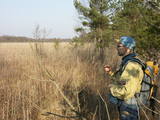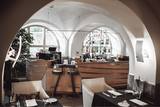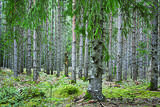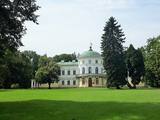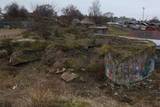| Nr | Nosaukums | Apraksts |
|---|---|---|
|
Atrodas skaistā vietā, Pilsētas ezera krastā. Saimniecībā audzē aitas, kazas, trušus un mājputnus. Piedāvā ekskursiju, bērniem trušu barošanu un jēru apskati pavasarī. Interesenti var piedalīties aitas cirpšanā. |
||
|
Saimniecība „Raudiņi” ir vieta, kur atpūsties mājīgā un klusā vietā starp jūru un mežu 10 minūšu brauciena attālumā no Rojas. Lai arī laika gaitā "Raudiņos" audzēti zirgi, kā arī ir nodarbojušies ar lopkopību, zemkopību un puķkopību, galvenā nodarbe šobrīd ir lauku tūrisms. Šeit iespējams atpūsties kopā ar ģimeni un draugiem (nelielā kompānijā), rīkot saliedēšanās pasākumus vai sporta spēles, gatavot gardu maltīti āra terasē uz īstas malkas plīts vai kamīnā. Vakarā vērot saules lēkta atspīdumu koku galotnēs. Nakšņošanai piedāvā viesu namiņus, siena matračus vai nomāt telts vietas un pie jūras sagaidīt saullēktu. Klusums, miers un dabas veldzējums "Raudiņos". |
||
|
Kaļķainais zāļu purvs izveidojies periodiski aplūstošā starpkāpu ieplakā, kas ir nozīmīga daudzu aizsargājamu augu sugu dzīvotne. Zāļu purvs ir dažviet pārskatāms no mežainajām kāpām, kas purvam pieguļ no dienvidaustrumu puses. |
||
|
Takas sākums atrodas Vidagā, vietā, kur uz Vizlas celts vēsturiskais akmens arkas tilts. 1,2 km garā taka bez marķējuma ved gar pašu upes krastu līdz pat ietekai Gaujā. Redzami skaisti dolomīta atsegumi, nelieli krāčveidīgi ūdenskritumi un iespaidīgais Žākļu dižakmens. |
||
|
Ģimenes restorāns Liepājā, pašā Tirdzniecības kanāla malā. Restorāns atrodas viesnīcas "Libava" ēkā, ar bagātīgu vēsturi, kuru mēģinām integrēt mūsdienu pakalpojumos. Vēsturiski, šeit bijis zivju tirgus, kas noteikti ir ietekmējis restorāna darbības virzienu - restorānā tiek piedāvāts plašs zivju ēdienu klāsts. Arī interjerā dominē jūras un zivju motīvi. Restorānā tiek piedāvāti ēdieni no Latvijas sezonālajiem produktiem. |
||
|
Neliels meža masīvs austrumos no Cirstes – Mazirbes ceļa
krustojumā ar Kolkas – Ventspils ceļu. Teiku vieta. Cauri Kaziņmežam pa Krustceļu
nonākam pie Kolkas – Ventspils ceļa (P 124) krustojuma
|
||
|
Atrodas Vecpiebalgas centrā pie Inešu ceļa. Vieta, kas jāapmeklē katram savas valsts patriotam, jo šeit atdusas leģendārā romāna "Mērnieku laiki" autori - brāļi Reinis un Matīss Kaudzītes, sabiedriskais darbinieks un valodnieks Atis Kronvalds u.c. Kapos apskatāmi brāļu Kaudzīšu un A. Kronvalda pieminekļi. Tos atrast palīdzēs izvietotās kartes un norādes. |
||
|
Pie ceļa, kas no Bernātu ciema centra ved uz jūru, redzamas augstas ar mežu apaugušas kāpas. Uz vienas kāpas (ir norāde) novietots piemiņas akmens ar pirmā Latvijas Valsts prezidenta Jāņa Čakstes 1924. g. teiktiem vārdiem: “Te jābūt kūrortam.” Atrodas Bernātu dabas parkā. |
||
|
Viena no vecākajām Latvijas pilsētām, par kuru ziņas ir atrodamas jau no 1378. g. Kā apdzīvota vietā tā izveidojās Tebras krastos (Rīgas-Prūsijas ceļa mala), kur savulaik atradusies kuršu zemes Bandavas nocietināta koka pils Beida. Viduslaikos Aizpute bija Kurzemes bīskapijas centrs. Pēc Kurzemes pievienošanas Krievijai 1795. g., Aizputē uz dzīvi apmetās ebreji. Šodien ceļotājus Aizputē visvairāk piesaista saglabājusies senā pilsētvide, pilsētas vēsturiskais centrs un pilsdrupas. |
||
|
"Skrīveru saldumi" ir ģimenes uzņēmums, kas jau trešajā paaudzē ražo konfektes "Gotiņa" - gan klasiskās, gan ar dažādām piedevām, kā, piemēram, ar rudzu maizi un dzērvenēm. Tāpat uzņēmums ražo dažādus citus saldumus no šokolādes, žāvētiem augļiem, riekstiem, sēkliņām, sukādēm un citiem vērtīgiem gardumiem. Apmeklētājiem tiek piedāvātas dažādas ekskursijas ar praktisku darbošanas. Viena no tām piedāvā piedalīties "Skrīveru Gotiņas" ekspedīcijā ar iespēju pašiem ietīt savas konfektes, iepazīties ar konfekšu tapšanas vēsturi, nodegustēt produkciju, kā arī iegādāties uzņēmuma produkciju ražotnes veikaliņā. Visas ekskursijas piemērotas gan bērniem, gan pieaugušajiem. |
||
|
No Rīgas dodieties gar Daugavas labo krastu un apciemojiet Trušu Karalisti, kurā trušu mājiņas ir veidotas kā mazas muižas un pilis. Pēc tam dodieties uz Skrīveriem nogaršot mājas saldējumu un apmeklējiet Kokneses pilsdrupas. Nākamajā dienā apmeklējiet privātu mini-zoo ar dažādiem eksotiskajiem dzīvniekiem, pēc tam dodieties uz Raunas cepli, lai redzētu, kā top dažādi māla priekšmeti no sākuma līdz beigām. Vērts apskatīt Cēsis un tās viduslaiku pili. Izstaigājiet Līgatnes dabas takas, kur iespējams redzēt vairākus vietējos savvaļas dzīvniekus. Siguldā bērniem patiks piedzīvojumu parks. Siguldā atrodas arī divas viduslaiku pilis. Pirms atgriešanās Rīgā, apciemojiet zemnieku saimniecību, lai apskatītu kazas, ponijus u.c. dzīvniekus, kā arī nogaršotu kazas piena piena produktus. |
||
|
Baronu Osten – Zakenu dzimtai piederošā muiža būvēta no jauna 1856. – 1857. gadā, jo veco muižu Krimas kara (1853. – 1856.) laikā nopostīja. Izrādās, ka minētā kara sākumā angļu kuģi Krievijas cara iebiedēšanas nolūkos apšaudīja Latvijas piekrasti un kuģus, t.sk. arī Kolku, kas tolaik ietilpa Krievijas impērijas sastāvā. Pēc muižas sagraušanas tās vietā uzbūvēja t.s. Balto namu ar saimniecības ēkām. Tā otrajā stāvā uzcēla manteļskursteni medījumu kūpināšanai (saglabājies līdz mūsdienām). Muižnieku īpašumā muiža atradās līdz 1919. gadam, kad tās pēdējo īpašnieku Kristianu fon Osten – Zakenu nošauj Tukumā. 1929. g. Baltajā namā ierīko pamatskolu, ko turpmāk sauc par Kolkas skolu. Tā darbojas līdz 1961. g. (tika uzcelta jauna skola), bet līdz 1989. g. ēkā notiek darbmācības stundas. Tajā laikā to dēvē par Veco vai Mazo skolu. No 1991. gada Kolkas Vecā skola ir Latvijas Universitātes Bioloģijas fakultātes īpašums, kurā ik gadu (no 1994. gada) norisinās studentu vasaras prakses. |
||
|
Baisogalos muiža ir viena no senākajām muižām – saukta karaliskā, jo piederēja Lietuvas lielajam kunigaitim. Līdz mūsdienām saglabājušies greznie, vēlīnā klasicima stila (ampīra) muižas nami celti 19.gs. vidū. 12 ha ainaviskais Baisogalos parks izveidots 19.gs. pirmajā pusē. No ciemata puses uz muižu ved kastaņu aleja. No vārtiem centrālā aleja ved caur diviem līkumotām ūdens krātuvēm, pār tiltiņu ar lauvu figūrām. Aiz muižas dažādi koki aptver līkumotās alejas un šaurus parka celiņus. Abu parka aleju pusēs atrodas pa ūdens krātuvei, parka dziļumā – dīķis ar salu. |
||
|
Bolderājā – austrumos no Lielupes ielas un dienvidaustrumos no Jātnieku ielas Daugavas krastā ir saglabājušās paliekas no četrām uzspridzinātām batereju pozīcijām. Šīs baterejas, kurās atradās 152. kalibra lielgabali, ir daļa no kādreizējās Rīgas fortifikāciju sistēmas (sk. arī Komētfortu, Daugavgrīvas cietoksni, Mangaļsalas fortifikācijas), kuras mērķis bija aizsargāt pilsētu no uzbrucējiem, kas nāktu (nāca) no jūras puses. No batereju augšas labi redzama Daugava un no jauna uzbērtā Krievu salas ziemeļdaļa (milzīgs smilšu kalns). Šī vēstures pieminekļa un tās apkārtnes stāvoklis – vairāk kā bēdīgs ...
|
||
|
Mežiem klāta sala Somu jūras līcī ~14 km uz ziemeļiem no |
||
|
Atrodas dienvidos no Vienības nama. Skvērs veidots 19. gs. otrajā pusē. Tajā atrodas vairāki ievērības cienīgi objekti: strūklaka (20. gs. 20. gadi), latviešu tautas dzejnieka Andreja Pumpura krūšu tēls, piemiņas akmens Nevainīgajiem sarkanā terora upuriem un Sv. Aleksandra Ņevska pareizticīgo kapela. Vienības ielas otrā pusē paceļas iespaidīgā Daugavpils universitātes ēka ar Raiņa pieminekli un saules pulksteni priekšplānā. |
||
|
Maršruts ietilpst dabas parka „Daugavas loki” teritorijā. Parks veidots unikālās Daugavas senielejas ainavas, bioloģiskās daudzveidības un bagātīgā kultūrvēsturiskā mantojuma saglabāšanas nolūkos. Daugavas senielejas krasti savu lielāko augstumu sasniedz t.s. Daugavas vārtos, kur upi iekļauj Ververu un Slutišku kraujas. Daugavas senielejas ainava „putna lidojuma” perspektīvā paveras no Priedaines skatu torņa. Vasargeliškos un Lazdukalnos 2015. g. ir uzbūvēti jauni skatu torņi. Skaistākās ainavas, kas veidojušās dabas un cilvēka mijiedarbībā, vērojamas Krāslavas, Užinkalna, Slutišku, Elernes un Juzefovas apkaimēs. Pie Adamovas, Dinaburgas un Slutiškos izveidotas dabas izziņas takas. Daugavas lokiem nav līdzīgu vietu citur Latvijā! Vienu atsevišķu dienu var veltīt Krāslavas apskatei. Minētajā posmā pieejamas ūdenstūristu apmetnes. Maršruta informācija no Latvijas Lauku foruma |
||
|
Beķereja, veikals un kafejnīca atrodas Vaiņodes centrā. Saimniece cep pīrāgus, cepumus un plātsmaizes Latgales meistara mūrētā maizes krāsnī, gatavo tradicionāli latviskus ēdienus, klāj svētku galdus. Beķerejas veikalā var iegādāties ceptuves gardumus un uzzināt par apkaimes interesantākajām vietām. Par dienas aktuālo piedāvājumu beķerejas saimniece ziņo facebook.com/ineta.zveja . |
||
|
Liepājas novada zaļā produkta, kultūrvēsturiskā mantojuma, seno lauku tradīciju saglabāšana un popularizēšana pilsētvidē. |
||
|
Saimniecībā tiek audzēti Helix Aspersa Maxima sugas gliemeži. Ekoloģiska produkcija. Tie tiek baroti tikai ar vietējiem dārzeņiem un gliemežiem domāto īpašo barību. |
||



